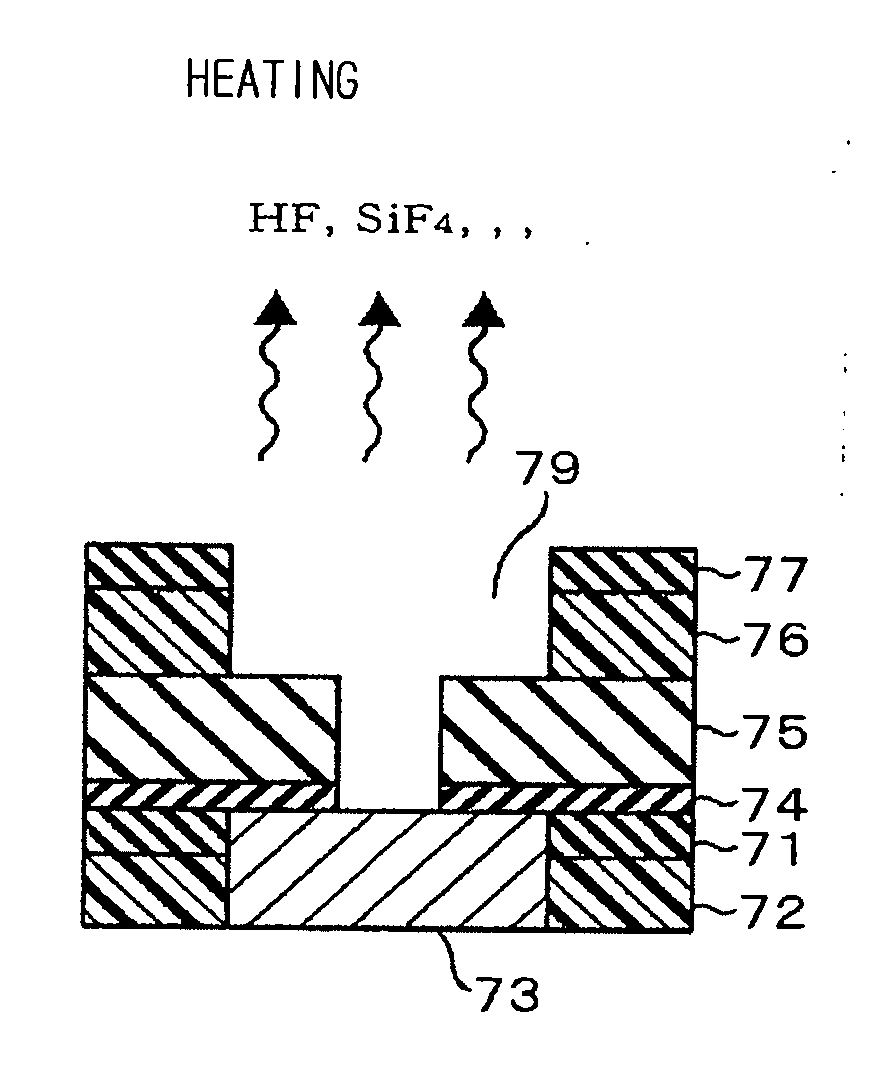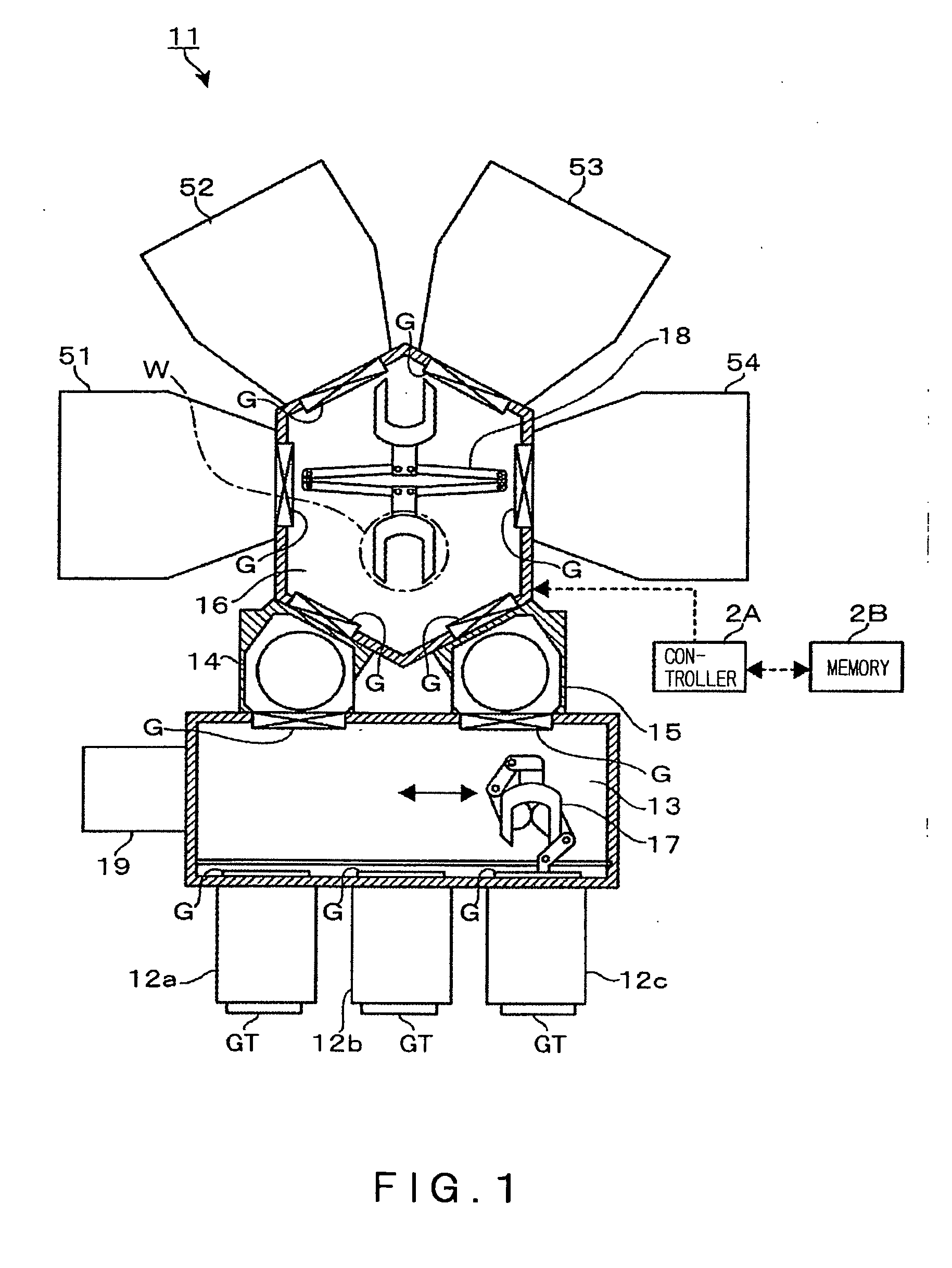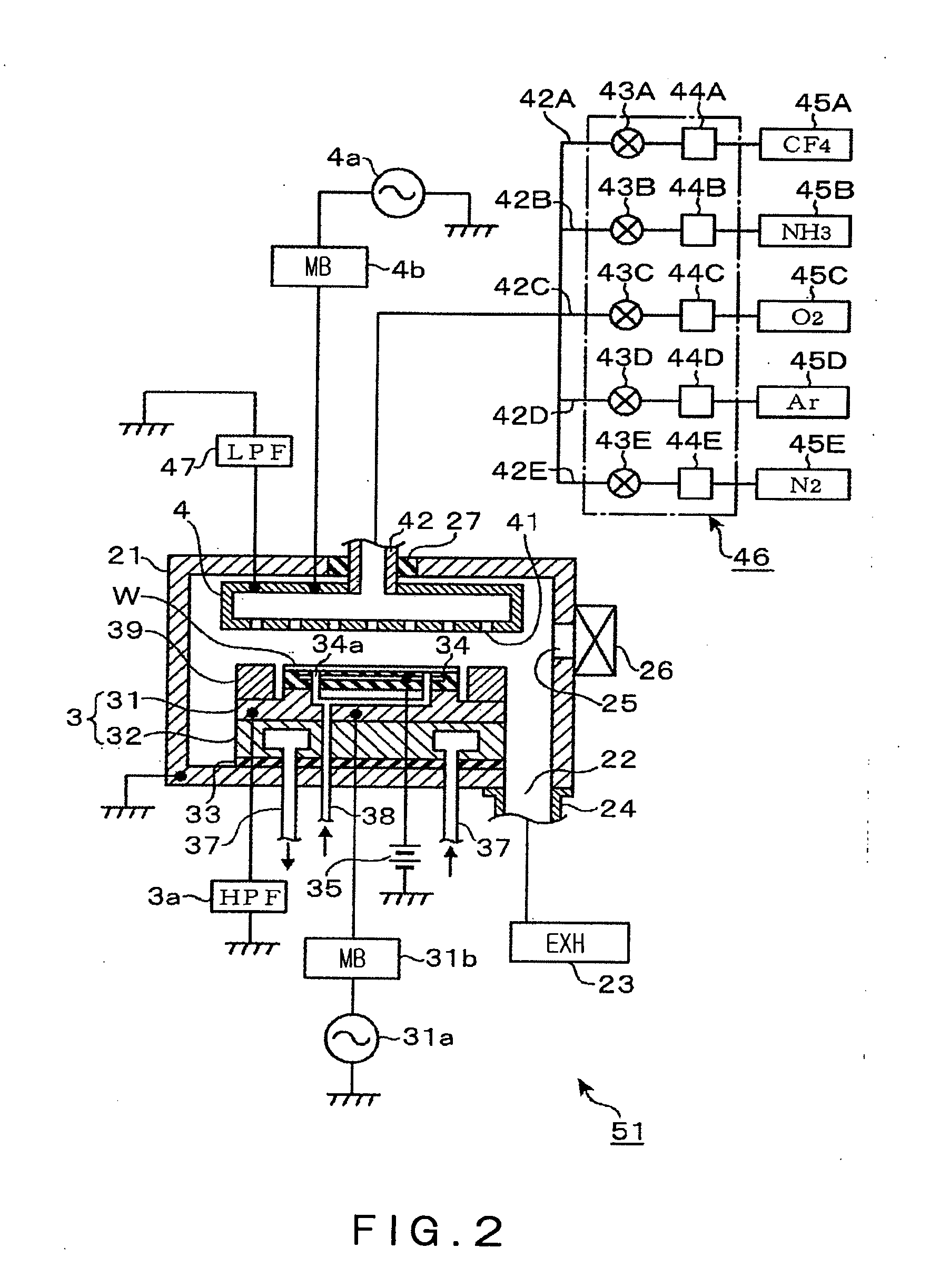Substrate processing method
a processing method and substrate technology, applied in the field of substrate processing methods, can solve the problems of increasing complexity of processing techniques, increasing the risk of affecting the health of operators, and hygroscopic compounding
- Summary
- Abstract
- Description
- Claims
- Application Information
AI Technical Summary
Benefits of technology
Problems solved by technology
Method used
Image
Examples
example 1
[0080]The etching process for the SiC film 83, the ammonia treatment and the heat treatment described above were applied to a wafer W in accordance with the steps described above.
example 2
[0081]The same processes as those in Example 1 were applied to a wafer W. In this case, however, for confirming the extent of effects of moisture content in atmospheric air, etching and the ammonia treatment for the SiC film 83 were conducted in the plasma processing apparatus 51, then the wafer W was returned once to the carrier chamber 12a of the surrounding atmosphere, and the wafer W was transported into the heating apparatus 54 and was subjected to the heat treatment.
PUM
| Property | Measurement | Unit |
|---|---|---|
| temperature | aaaaa | aaaaa |
| frequency | aaaaa | aaaaa |
| frequency | aaaaa | aaaaa |
Abstract
Description
Claims
Application Information
 Login to View More
Login to View More - R&D
- Intellectual Property
- Life Sciences
- Materials
- Tech Scout
- Unparalleled Data Quality
- Higher Quality Content
- 60% Fewer Hallucinations
Browse by: Latest US Patents, China's latest patents, Technical Efficacy Thesaurus, Application Domain, Technology Topic, Popular Technical Reports.
© 2025 PatSnap. All rights reserved.Legal|Privacy policy|Modern Slavery Act Transparency Statement|Sitemap|About US| Contact US: help@patsnap.com



